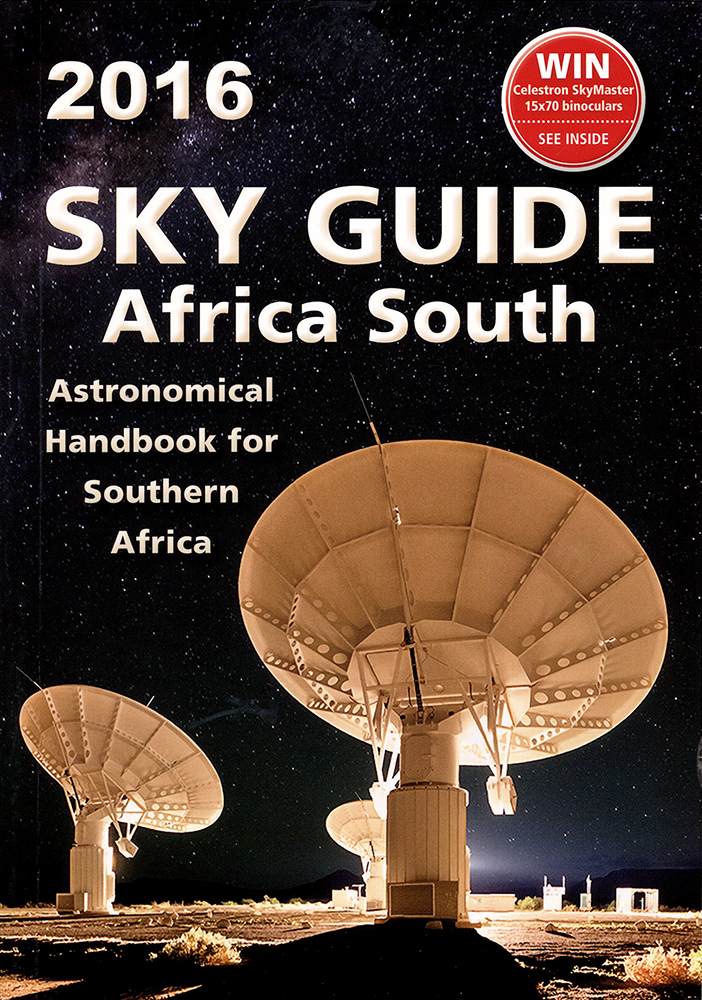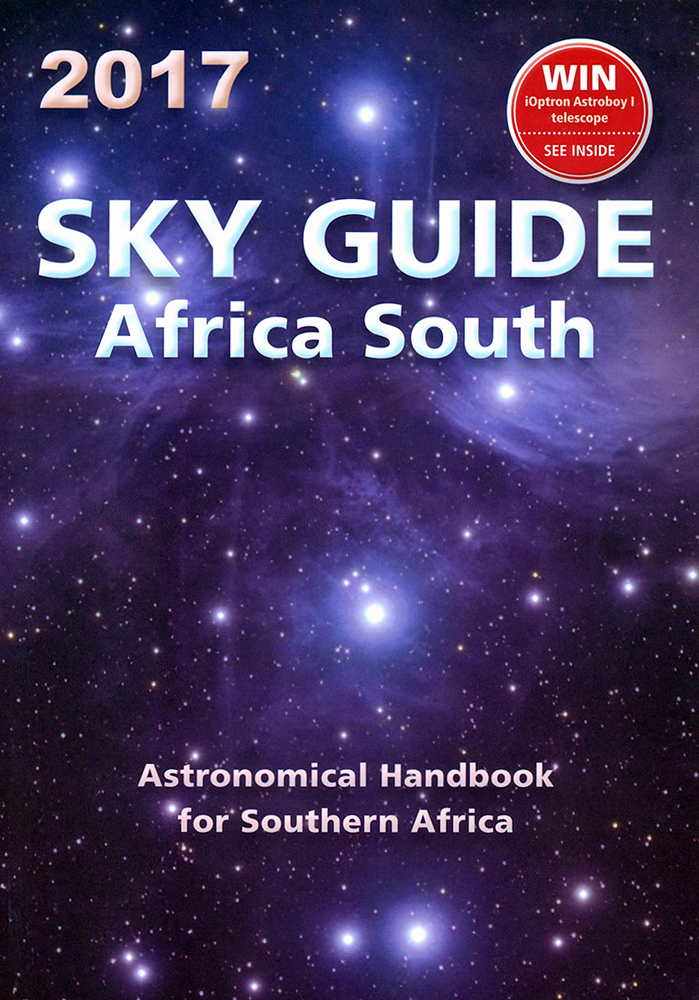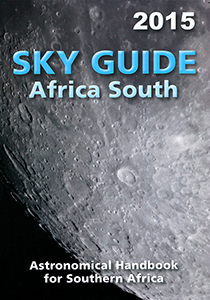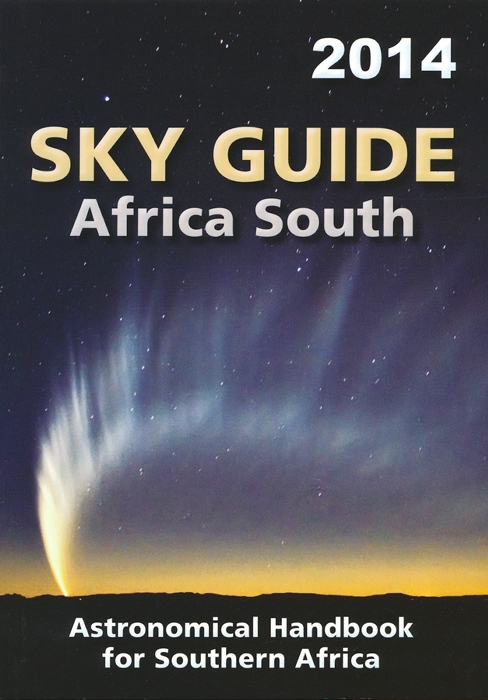Sky Guide Africa South 2016, by Astronomical Society of Southern Africa
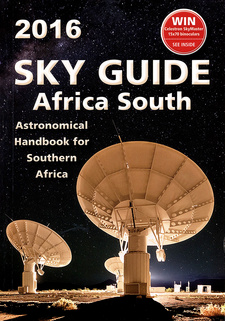
Sky Guide Africa South 2016, by Astronomical Society of Southern Africa. Penguin Random House South Africa (Nature). Cape Town, South Africa 2016. ISBN 9781775842378 / ISBN 978-1-77584-237-8
Sky Guide Africa South is an annual publication of the The Astronomical Society of Southern Africa. This is the edition of 2016.
Astrophotography is both challenging and rewarding. Difficulties to overcome include faint, low-contrast targets, the turbulent atmosphere, Earth's rotation, and noise in the image. However, modern digital cameras and free specialized software enable even beginners to capture images relatively easily. The key to success is to start simply, with equipment to which you already have access, and then build as your interest and experience grow. There is a natural progression in terms of difficulty and expense:
1. Wide-field scenic images with an astronomical element. To capture star trails, put your camera on a tripod, aim it at a nice piece of sky, preferably with some foreground interest, set it to manual mode and focus on infinity. As a starting point, set the aperture almost at its widest, the exposure to the longest your camera allows, and the ISO to about the middle of the range. Use the self timer to trigger the shutter to avoid camera shake. Trails will be short and curved near the pole, longer and straighter towards the celestial equator. A short focal length gives a wider field and less trailing. Next, with the camera set on Bulb (B) and using a cable release, experiment with longer exposures for longer trails.
2. Moderate-field starscapes without star trails require some form of tracking. You can build a simple barn-door tracker, or attach the camera to a telescope with an equatorial mount.
3. Lunar and planetary work requires a higher magnification. Start with the Moon, as it is very bright and has fabulous detail. Try the afocal method: aim your telescope at the Moon, focusing it by eye, hold your camera (even a cell phone) so it is pointing squarely into the telescope eyepiece, and take the shot. More advanced techniques include using a DSLR at prime focus, and eyepiece projection. Since the atmosphere destroys fine detail, you can use video (even from a webcam) to capture bursts of images over several seconds and use free stacking software to select the best frames and synthesise a single high-resolution image.
4. Deep-space imaging involves long exposures (mandating excellent tracking) as well as many hours of image processing to get satisfactory results. Conventional DSLRs are quite capable of producing very good results but the best results require specialist low-noise high-sensitivity cameras with a cooling system. Every year brings new developments that make astrophotography easier, but you do need I to "pay your dues" in terms of experience to get really good results. And at every level, there is always still more to learn, ensuring a growth path to keep you interested. Light pollution is a problem faced by anyone who wants to enjoy a clear view of the night sky. Additional factors such as safety and accessibility further complicate the choice of where to go to look at the stars. Fortunately, several avenues are available for exploration.
• ASSA Centres and other astronomy clubs sometimes have excursions to well-researched dark-sky locations, not only is there safety in numbers, but also camaraderie. Often, small game parks or dams frequented by fishermen have accommodation or caravan parks, are accessible, not too expensive, and usually not overly illuminated. Joining an outdoors group (e.g. Exploration Society of Southern Africa, Mountain Club of South Africa, Meridian Hiking Club) can put you in contact with people who habitually go to desolate places that are great for astronomy. Generally speaking, the farther you are from a city, the better the sky. Unfortunately, mines and other non-urban industry can illuminate huge areas. [...]
This is an excerpt from the Sky Guide Africa South 2016, by Astronomical Society of Southern Africa.
Title: Sky Guide Africa South 2016
Publisher: Astronomical Society of Southern Africa
Publisher: Penguin Random House South Africa (Nature)
Cape Town, South Africa 2016
ISBN 9781775842378 / ISBN 978-1-77584-237-8
Softcover, 15 x 21 cm, 136 pages, throughout colour photos and images
Astronomical Society of Southern Africa im Namibiana-Buchangebot
Sky Guide Africa South 2016
Sky Guide Africa South 2016 is an annual publication of the Astronomical Society of Southern Africa.
Sky Guide Africa South 2017
Sky Guide Africa South 2017 is intended as a reference work for both the established astronomer and the casual sky watcher in Southern Africa.
Sky Guide Africa South 2015
Sky Guide Africa South 2015 is a practical resource for astronomers, whether novice, amateur or professional.
Sky Guide Africa South 2014
The Sky Guide is a well-established astronomical handbook for Southern Africa and is intended as a reference work.

